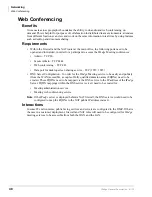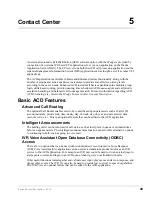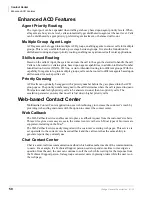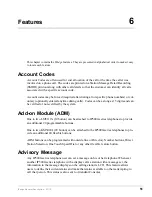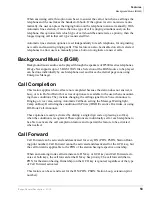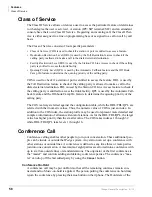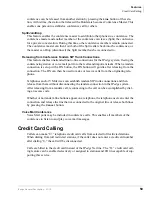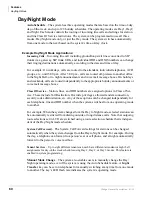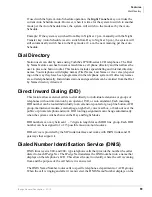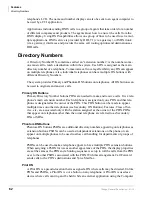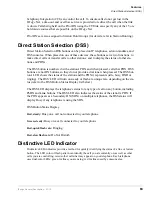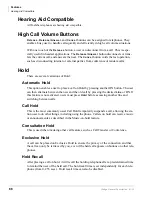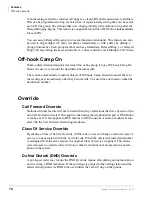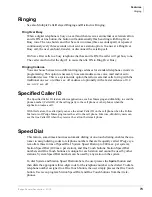
Features
Day/Night Mode
60
IPedge General Description 01/12
Day/Night Mode
Auto Schedule
– The system has three operating modes that are based on the time-of-day,
day-of-the-week, and up to 128 holiday schedules. The operating modes are Day1, Day2,
and Night. Each mode controls the routing of incoming line calls and settings for station
and line Class Of Service restrictions. The system can be programmed to use all three
modes, Day/Night mode only, or just the Day mode. The system switches automatically
from one mode to the next based on the system’s time-of-day clock.
Example Day/Night Mode Applications:
Incoming Calls
– Incoming line call including ground/loop start lines converted to SIP
trunks via a gateway, SIP trunk URIs, and individual DID and DNIS numbers can change
their ringing destinations automatically according to the date and time of day.
For example: On workdays, calls are routed to the attendant, individual telephones, ACD
groups, etc., until 5:00 p.m. After 5:00 p.m., calls are routed off-premise to another office,
to the Night Bell, or to night announcements and voice mail message boxes. On holidays
and weekends, calls are routed independently to the appropriate holiday announcements or
voice mail message boxes.
Class Of Service
– Station, lines, and DID numbers are assigned options in Class of Ser-
vice. These include Toll Restriction, Override privileges, allowed tandem connection,
security code administration, etc. Any of these options can be changed independently for
each telephone, line and DID number when the system switches from one operating mode
to another.
For example: When the system changes from the Day to Night mode, selected stations can
be automatically restricted from dialing outside or long distance calls. Note that outgoing
route selections set in LCR are switched using a route selection schedule that is indepen-
dent of the Day/Night mode schedule.
System Call Forward
– The System Call Forward settings for stations can be changed
automatically when the system changes from the Day to Night mode. For example: During
the day, a telephone can forward to a person’s car or cell phone, and at night automatically
forward to the person’s voice mailbox.
Tenant Services
– Up to eight different tenants can each have different attendant or night bell
assignments for day-of-the week schedules using Day 1, Day 2, or Day 3 modes. This feature is
enabled in system programming.
Manual Mode Change
–
The system also enables users to manually change the Day/
Night operating mode, even if the system is using the Auto Schedule feature. A
Night
Transfer
key can be set on telephones for manually switching at any time from one mode
to another. The key’s LED flash rate indicates the system’s operating mode.
Содержание ID EDGE
Страница 1: ...TOSHIBA Telecommunication Systems Division January 2012 General Description Title Page ...
Страница 6: ...This page is intentionally left blank ...
Страница 12: ...This page is intentionally left blank ...
Страница 24: ...This page is intentionally left blank ...
Страница 128: ...This page is intentionally left blank ...
Страница 134: ...This page is intentionally left blank ...
Страница 142: ...This is the last page of the document ...



